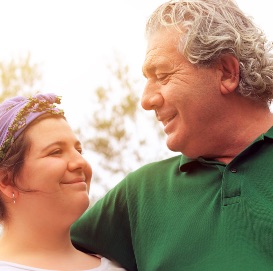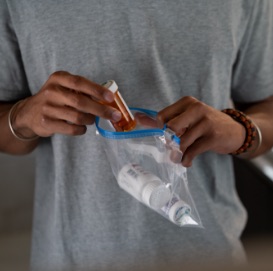RESEARCH ROUND-UP: OPIOID FACTS FOR PARENTS

Data are a powerful way to understand how opioids work and the risk they pose to our communities. Data also shows what we can all do to prevent the impact of opioids on our loved ones and in our communities.
HOW OPIOIDS IMPACT THE BRAIN
Opioids are a class of drug or medications used to relieve pain. We have opioid receptors in our bodies. Opioid drugs and medications work to reduce the pain signals that we’re receiving, to make the pain we have from an injury or surgery less intense. However, opioids can also work in our brains to create a pleasurable effect that can encourage some people to continue using them after they are no longer needed medically.
The longer opioids are used, and with larger quantities, they slowly start to change the chemistry of the brain. Soon, the brain needs the opioid drug or medication to maintain that feeling. When a person stops taking opioids after a long period of time, they experience the opposite of pain relief in the form of withdrawal symptoms. Withdrawal can include severe pain, vomiting and sweating. The body physically reacts to the lack of opioids in a strong way.
This cycle between the brain needing opioids and the body responding painfully when that need is not met, can make opioids incredibly addictive.
WHAT WE KNOW ABOUT RISK
Washington State agencies are working together to address opioids in our communities with holistic prevention and treatment programs. As a result of this work, we are growing the understanding of the risk and impact opioids in our state:
• In Washington State, approximately 700 people die each year from an opioid overdose. (Washington State Department of Health Opioid Dashboard)
• For every overdose death in Washington, there were 4.5 hospitalizations and 11 ER visits related to overdose. (Washington State Department of Health State Health Assessment 2018)
• 64% of all drug overdose deaths in Washington involve an opioid. (Washington State Department of Health State Health Assessment 2018)
• The highest rates of overdose death in Washington occur among men 45-54 years old. (Washington State Department of Health State Health Assessment 2018)
• Young adults 18-25 years old have the highest use with 9% reporting they have used pain relievers non-medically. (Washington State Department of Health State Health Assessment 2018)
• In 2018, about 2,500 Washington State 12th graders had tried heroin at least once in their lifetime and even more (about 3,500) use pain killers to get high in any given month. (Washington Healthy Youth Survey)
• Young people are often first exposed to opioids through prescriptions. Dentist prescriptions alone account for 31 percent of adolescents’ first exposure to opioids. (US Department of Health and Human Services)
WHAT WE KNOW ABOUT PREVENTION
We can prevent the impact of opioids in our community. Having an honest conversation and safely storing and disposing of medication are lifesaving steps.
Did you know:
• That kids are 50 percent less likely to use drugs when parents tell them about the risks. (SAMHSA)
• Young people who have a strong bond with their parent and whose parents express disapproval of substance use have a lower risk of misuse. (SAMHSA)
• We can help grow good behavior. Most teens in Washington report their parents feel it is very wrong to use prescription drugs not prescribed to them. Over 80% of 8th, 10th, and 12th graders say their parents think it is very wrong, while 5 percent say their parents think it is not wrong or just a little wrong. (Washington Healthy Youth Survey)
• Though about two-thirds of teens (8th, 10th, and 12th graders) perceive prescription drug misuse to carry great risk of harm, only 1 in 10 believes it to have little to no risk. We can talk to those 1 in 10. (Washington Healthy Youth Survey)
• Of people entering treatment for heroin addiction who began abusing opioids in the 1960s, more than 80 percent started with heroin. Of those who began abusing opioids in the 2000s, 75 percent reported that their first opioid was a prescription drug. Learning to manage prescriptions early, and storing and disposing of them properly, can prevent future drug use. (National Institute on Drug Abuse)
We all have a role to play in making our communities healthier and safer. To learn more about the science of prevention, and those working in prevention across Washington State visit www.theathenaforum.org
Many counties in Washington even have pharmacy disposal and mail in options for those with limited mobility. Ask about disposal options near you when prescribed medication.
If participating in a Take Back program is not an option, dispose of medication in the household garbage. Take the following precautions:
1. Remove the medications from their original containers and mix them with something undesirable, such as used coffee grounds, dirt, or cat litter. This makes the medicine less appealing to children and pets and unrecognizable to someone who might go through the trash looking for medications.
2. Put the mixture in something you can close (e.g., a re-sealable storage bag, or plastic food container) to prevent the drug from leaking or spilling out.
3. Throw the container in the garbage.
4. Scratch out all your personal information on the empty medicine packaging to protect your identity and privacy. Throw the packaging away.
While the Food and Drug Administration also has a list of flushable medications be mindful of the environmental impacts flushed medications have on our water systems.
PAY ATTENTION
When you have an active prescription, pay attention to how that medicine is being used.
• Know how many pills you have available and count them regularly.
• Keep a locking bag in the kitchen instead of the bathroom to prevent loved ones from using medicines in secret.
• Pay attention to whether or not the prescription is actively being used. If it is no longer needed, it’s time for a trip to a Take Back site!
Making a plan for safe storage, disposal and being aware of the medication in your home are all ways to prevent opioid misuse. These strategies also make your home safer for children, pets and the environment. Take a look around - is your home opioid-proof?
SOURCES
https://www.doh.wa.gov/DataandStatisticalReports/HealthDataVisualization/OpioidDashboards
https://www.doh.wa.gov/Portals/1/Documents/1000/2018SHA_FullReport.pdf
https://www.askhys.net/Docs/HYS%202018%20prescription%20drugs%20and%20opiates%20data%20brief%20Final.pdf
https://www.hhs.gov/ash/oah/adolescent-development/substance-use/drugs/opioids/index.html
https://store.samhsa.gov/product/talking-your-kids-about-prescription-drug-abuse-not-worth-risk-parents/sma12-4676b1
https://www.drugabuse.gov/publications/research-reports/relationship-between-prescription-drug-heroin-abuse/prescription-opioid-use-risk-factor-heroin-use
www.theathenaforum.org
recent topics

GET HELP
If you or your loved ones are suffering from addiction to opioids, now is the time to get help.
GET HELP





